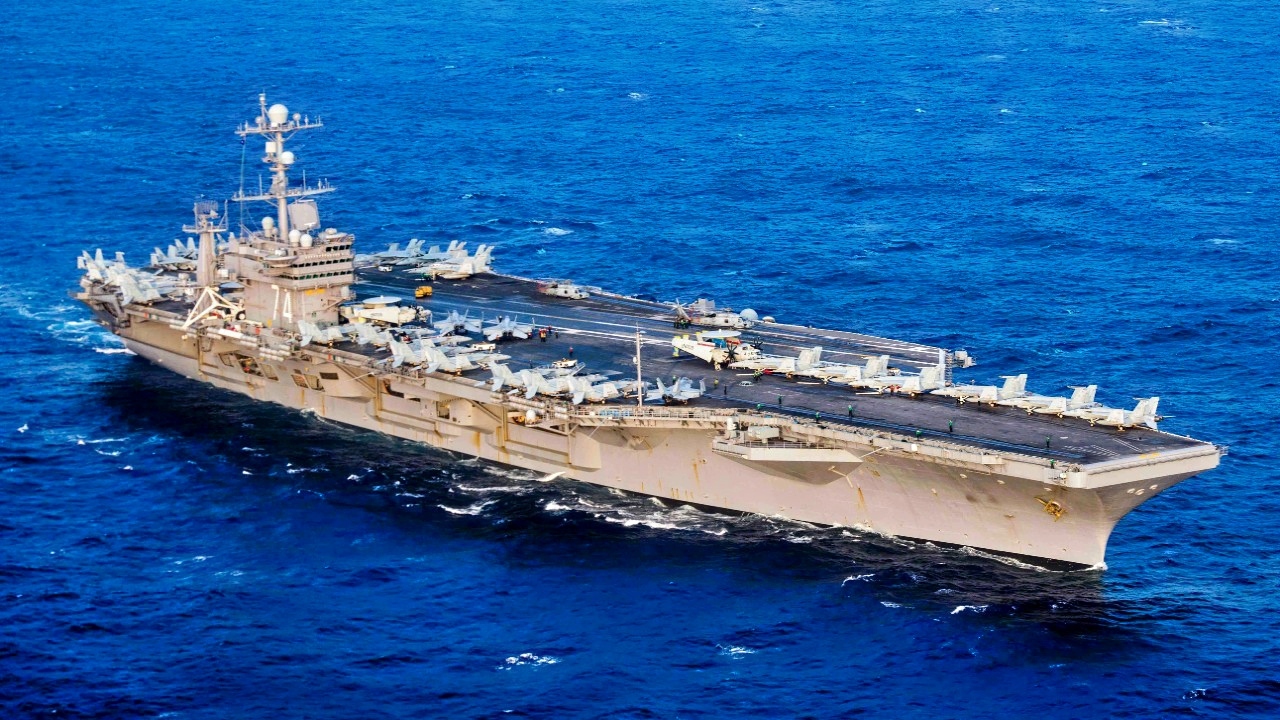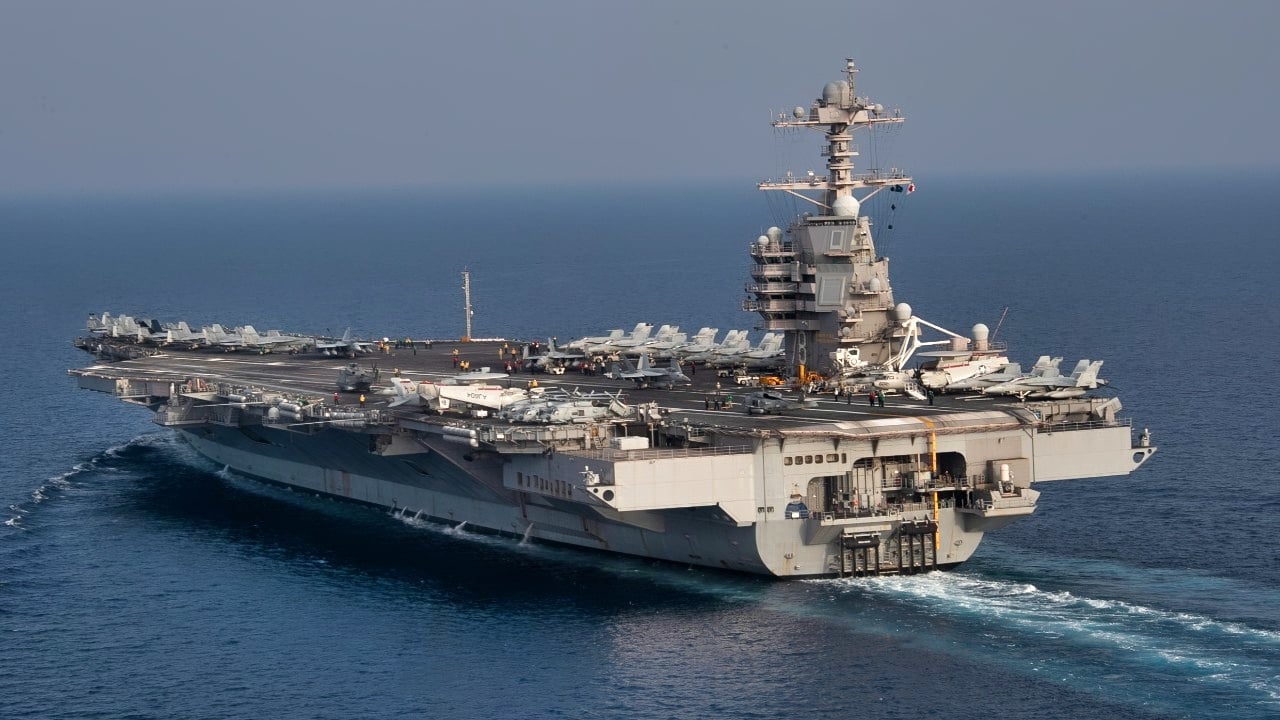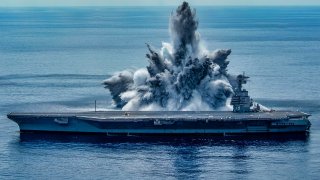How to Sink an Aircraft Carrier: Tip Over in a Bad Storm?
The USS Gerald R. Ford, America’s newest supercarrier, epitomizes advanced naval engineering. At over 1,000 feet long, it defies assumptions of instability, with a knifelike hull and starboard superstructure.
What You Need to Know: The USS Gerald R. Ford, America’s newest supercarrier, epitomizes advanced naval engineering. At over 1,000 feet long, it defies assumptions of instability, with a knifelike hull and starboard superstructure.

-Yet, aircraft carriers are among the most stable vessels due to careful balance between buoyancy and gravity.
-The carrier’s center of buoyancy is higher than its center of gravity, allowing it to resist tipping. A broad, flat bottom underpins stability, while the shifted superstructure on the starboard side aids flight operations and maintains balance.
-Modern carriers may appear impossible, but they’re engineered marvels, stable and meticulously designed for function.
Why Aircraft Carriers Are the Most Stable Ships in the Navy
Few things demonstrate the marvel of human engineering like a modern aircraft carrier. Measuring over 1,000 feet long and standing 250 feet above the water, the USS Gerald R. Ford, the U.S. Navy’s newest supercarrier, is perfectly representative of the design prowess that goes into these ships.
To the casual observer, these ships must hardly seem able to float, let alone weather rough seas. The knifelike hull design suggests inherent instability, while a massive superstructure on one side of the flight deck seems ready to capsize the vessel at any moment. But centuries of naval architecture have culminated in these vessels, which remain among the most stable of all oceangoing platforms.
Aircraft Carriers and Buoyancy
Carriers do not capsize, because their center of buoyancy is higher than their center of gravity. Buoyancy is derived from carriers being less dense than water. While many of the individual components that make up the carrier, such as steel deck plating, are far more dense and would sink on their own, when combined they form the many hollow spaces inside a ship that allow it to float.
Carriers are designed in such a way that all of this buoyant force is concentrated at a point higher than its center of gravity, or the concentration of its weight. As a carrier begins to tip over, its center of gravity must rise father and father out of the water, requiring more and more force to continue doing so. This principle means the ship actually strives harder to right itself the farther it tips. In spite of any strange shapes or angles, carriers adhere to this principle, and it makes them inherently stable.

While keen observers may note that carriers appear to taper into a narrow edge to slice into the water, once the ship is pulled into drydock the truth is revealed. This narrowing extends only to the waterline. It is designed to reduce drag at the surface of the water. Beneath the surface, carriers have a wide, flat bottom, a very stable platform.
Shifted Superstructure and Angled Deck
One of the most striking features of aircraft carriers is the island superstructure. This large, blocky structure on the starboard side of the flight deck is used for conning the ship and directing flight deck operations. It was pioneered as early as 1917, as the difficulties in landing and taking off around a large building directly in the middle of the flight deck were readily apparent. By shifting the deck structure to one side, designers were able to clear a full flight deck for aircraft. Simply widening the flight deck a few out on the opposite side contributes enough mass to make up for the mostly hollow structure, keeping the ship balanced.
Of note, the superstructure on nearly every aircraft carrier is on the starboard side of the ship. This is due mainly to the fact that the propellers on aircraft usually spin to the left when viewed from the cockpit, inducing a yaw, or pull, in that direction.
In the event that a pilot loses control or is unable to overcome this yaw, the aircraft will be pulled away from the superstructure.
Carriers are marvels of engineering and design. At first glance, they appear to be impossible ships. Digging a little deeper reveals the advances that made modern carriers possible and shows how they are, in fact, among the most stable ships in any navy.
About the Author: Defense Expert Maya Carlin
Maya Carlin is an analyst with the Center for Security Policy and a former Anna Sobol Levy Fellow at IDC Herzliya in Israel. She has by-lines in many publications, including The National Interest, Jerusalem Post, and Times of Israel. You can follow her on Twitter: @MayaCarlin.
Image Credit: Creative Commons.


